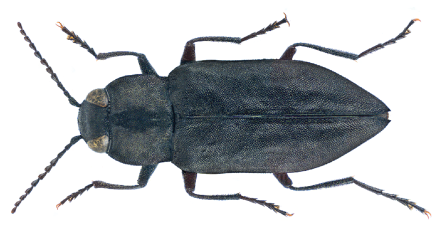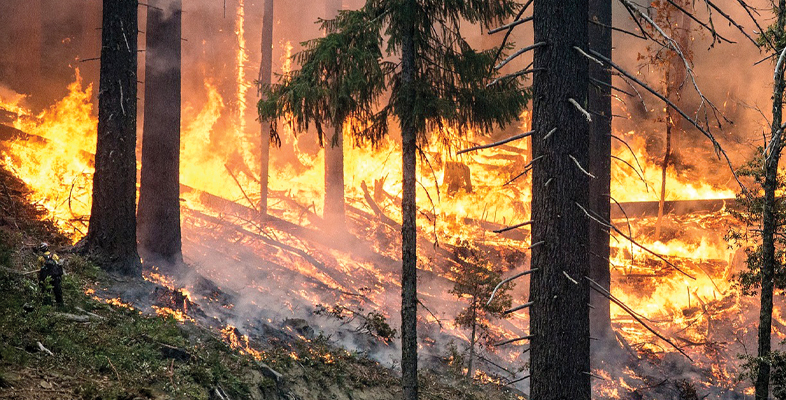3.3 Morphological traits for detecting fire
An interesting example of a morphological trait in animals that may be adaptive in fire-prone habitats is the presence of fire detectors in a number of insect species. The pyrophilic insects are attracted to fires and mate close to fires, lay eggs in killed or weakened trees and their larvae feed on burned wood.
-
One species of beetle that is attracted to habitats burned by fire has been mentioned in Video 1. Recall the morphological trait used by these beetles to detect fire.
-
They have infrared receptors.
The species shown belongs to the genus Melanophilia, also known as fire beetles. They have infrared receptors on the underside of their middle pair of legs, and there is some evidence that they can detect fire at distances of 130 km (Schmitz and Bousack, 2012; Figure 19).

Other beetles that detect and are attracted to fire, are several species of the longhorn beetles (genus Monochamus) which are thought to have smoke receptors on the antennae (Alvarez et al., 2015).
While some animals may benefit from habitats generated by recurrent fires, others benefit from the fire itself. Birds have been seen catching insects fleeing the fire front (e.g. the fork-tailed drongo, Dicrurus adsimilis) or walking behind a fire feeding on recently charred invertebrates (some species of egret, genus Egretta). A recent study reported that there is even evidence of raptors intentionally spreading fire by picking up and dropping burning branches, thereby increasing the availability of prey (Bonta et al., 2017; Figure 20).

A substantial impact of fire on fauna is the change in the habitat as the vegetation recovers from fire which can occur over decades. After an intense crown fire for example, all species dependent on unburned forest habitat may disappear and be replaced by a whole new suite of animals that changes as the forest recovers. Across a landscape, the pattern of fire can result in a mosaic of patches where vegetation differs in successional age – some patches being burnt more recently than others. This influences animal population structure and composition as some species go extinct locally and some recolonise older or unburned patches. Nectar-feeding birds, for example, may lose their source of nectar after a fire and move to unburned patches for food. Changes in the spatial pattern of fires may also change extinction risks of birds like Australian honey-eaters that require a specific mix of mature and immature populations of nectar plants. At the landscape scale, fire may therefore increase biodiversity by maintaining a patchwork of habitats suitable for different animal species.
